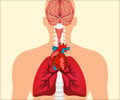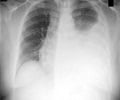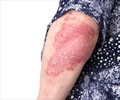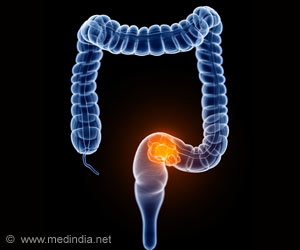Tuberculosis vaccine trial results offer potential for BCG Revaccination and subunit vaccines. It is the first 'prevention of infection' trial conducted for TB.
- The first subunit vaccine for tuberculosis (TB) shows ability to protect against infection.
- This experimental vaccine candidate is called H4:IC31.
- A subunit vaccine provides immunity against viruses without introducing the viral particles to the immune system.
In this prevention-of-infection Phase 2 trial conducted in South Africa, revaccination with the Bacille Calmette-Guerin (BCG) vaccine significantly reduced sustained TB infections in adolescents.
The candidate vaccine - H4:IC31
An experimental vaccine candidate - H4:IC31 reduced sustained infections, although not at statistically significant levels. However, the trend observed for H4:IC31 is the first time a subunit vaccine has shown any indication of ability to protect against TB infection or disease in humans.
TB infections that developed during the study were determined using a QuantiFERON-TB Gold in Tube (QFT-GIT) test, a commercially available blood test that helps diagnose TB infections. In the trial, individuals who tested negative for QFT-GIT were considered to not have a TB infection. The trial measured the rate by which individuals converted to QFT-GIT positive, implying evidence of TB infection. Those individuals who tested QFT-GIT positive consecutively over six months were considered to have a sustained infection.
The results will be presented at the 5th Global Forum on TB Vaccines in New Delhi, India.
We believe the results from this novel trial design will provide significant scientific benefit to the field in understanding TB infection, and based on this positive signal, we look forward to testing the potential of such vaccines to prevent TB disease among uninfected adolescents in a larger, more traditional prevention-of-disease clinical trial."
The clinical trial was conducted at SATVI and at the Emavundleni Research Centre (part of the Desmond Tutu HIV Centre). It was funded by Sanofi Pasteur, the United Kingdom's Department for International Development, and Aeras. The study was approved by the Medicines Control Council of South Africa and the relevant local independent ethics committees.
Jacqui Shea, Ph.D, CEO of Aeras, stated: "New TB vaccines are essential to end this deadly epidemic, especially with the rise of drug-resistant strains. In this innovative study, we not only observed important results for BCG, we also saw the first early efficacy signal against infection to be shown by a subunit TB vaccine candidate (H4:IC31). Further, we established that the novel prevention-of-infection trial design has the potential to provide evidence of a biological signal earlier and at lower cost than traditionally designed TB vaccine prevention of disease efficacy studies. The data collected will inform the next series of clinical studies as well as enable the search for correlates of protection against sustained infection. Later this year, Aeras and its partners look forward to announcing primary results from a Phase 2b prevention of disease trial with M72/AS01E, another subunit vaccine candidate, and to commencing two Phase 2 clinical trials with an additional, promising subunit vaccine candidate."
Study Design and Results for H4:IC31 Vaccination and BCG Revaccination
The study involved 990 HIV-negative, healthy adolescents (12 to 17 years of age) who had been vaccinated as infants with BCG. All participants were randomized evenly into three study arms: placebo, H4:IC31, or BCG revaccination. All participants were screened to ensure they were not infected with Mycobacterium tuberculosis (Mtb) prior to vaccination in the study. At the outset of this innovative proof-of-concept study, statistical significance was set at one-sided p<0.1 to favor the risk of observing a false positive efficacy signal rather than a false negative.
The data showed that both vaccines appeared to be safe and produced an immune response in the adolescents studied. No vaccine-related serious adverse events were reported in the study, and the most common vaccine-related adverse event was injection site swelling in BCG revaccinated participants, typical for BCG vaccination.
For the primary efficacy endpoint, 134 participants tested positive for an initial Mtb infection as measured by QFT-GIT conversion from negative to positive (placebo=49; BCG=41; H4:IC31=44). When compared to placebo, neither vaccine achieved statistical significance in preventing an initial QFT-GIT conversion. Observed vaccine efficacy was 20.1 percent (p=0.15) for BCG revaccination and 9.4 percent (p=0.32) for H4:IC31.
For the secondary efficacy endpoint, 82 participants exhibited a sustained QFT-GIT conversion lasting at least 6 months following initial conversion (placebo=36; BCG=21; H4:IC31=25). These participants were evaluated to see if they would revert to negative as measured by the QFT-GIT test. In the BCG revaccination arm, the vaccine efficacy for preventing a sustained infection was 45.4 percent (p=0.013) and in the H4:IC31 arm the vaccine efficacy was 30.5 percent (p=0.08).
Reference:
-
Results from Innovative Phase 2 Tuberculosis Vaccine Trial Offer Potential for New BCG Revaccination Strategies, Hope For Subunit Vaccines - (http://www.aeras.org/pressreleases/results-from-innovative-phase-2-tuberculosis-vaccine-trial-offer-potential#.WovtjLjhUdV)
Source-Eurekalert
















